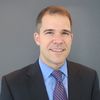Rosie Rios is the Treasurer of the United States, holding direct oversight of the U.S. Mint, the Bureau of Engraving and Printing and Fort Knox. She is a key liaison with the Federal Reserve and a senior adviser to the Treasury secretary on issues of community development. Prior to joining the Obama administration, Rios was a managing director of MacFarlane Partners, a real estate investment management firm, and served as the director of economic development in the California cities of Oakland and Fremont, among others. This interview was conducted by Tom Fox, who writes The Washington Post's Federal Coach blog.
What experience has helped you in your role as Treasurer?
My background is in three different areas: economic development, real estate and investment management. In those three areas, I've worked in the public and private sector. For me, to bring that perspective to Treasury has been very unique in that those three areas relate directly to the economic recovery in the form of job creation, housing and access to capital. I don't consider myself a political appointee. I consider myself a practitioner.
What do you think are the key aspects to being an effective leader?
There are two components to being a good leader. One is having a very clear vision. The other is facilitating communication and workplace collaboration. Both are important to making employees feel valued. Once you develop a vision with your employee base, you can then begin to develop a sense of trust and respect in the workplace and it becomes a team effort.
For example, at Treasury last year, I launched a strategic alignment initiative between the Bureau of Engraving and Printing (BEP) and the U.S Mint. For years, the two organizations have had similar objectives and common interests as two of the few manufacturing organizations within the federal government. However, prior to 2011, they had very little interaction with one another, particularly on the senior leadership levels. We began by identifying areas specific to production and operations, including labor relations, risk management, safety and inventory control. Then, we started working on projects to make both organizations more efficient. We asked employees on every level to participate in the process, from senior staff on down. In just a short time, we've been able to get a dozen or so very specific projects underway. They've yielded very significant results for both organizations.
Both BEP and the Mint made significant gains in my organization's Best Places to Work rankings this past year. How did you increase employee satisfaction with their jobs?
The gains at BEP and the Mint were not an accident. We launched a series of town halls to engage employees who are not normally involved in management decisions. We were able to learn so much from the individual-level input. I remember my last visit to the BEP plant in Fort Worth. I met with 431 employees during a period of three days. I spoke with employees one on one, during the early morning, midday and late night shifts. As a result, we were able to listen to everyone and let them know that their opinions are valued. Both Director Larry Felix at the BEP and Dick Peterson at the Mint have done the same.
Are there examples of how you have engaged employees and made them feel they are an integral part of the organization?
The Bureau of Engraving and Printing is celebrating its 150th anniversary this year. It happens to coincide with the 220th anniversary of the Mint. It really makes employees feel valued in terms of the historic role they play. Coin and currency are really one of the founding purposes of Treasury. There is no other commodity that really chronicles American history better than our currency and coins. So to go through this planning process with them, we can reconnect with their work and showcase why it's important and why they are valued.
What can federal agencies do to ensure that their short-term successes are maintained?
The key to long-term success at any organization is having the vision I discussed earlier and clear implementation strategy that balances sound management principles with political realities. The vision must be sustainable. It must be able to outlive you. I like to think about the lifespan of a strategy. I consider not just what's in my best interest, but what's in the best interest of the organization as a whole. It allows me to build a framework, which I can then adapt based on employee input and on economic indicators, like demand projections. If nothing else, the plan has to be malleable.
Tell me about a person or experience that's influenced your approach to leadership.
Everything I've learned, I've learned from my kids. I have a 15-year-old son and an 11-year-old daughter and over the years, they've taught me the importance of flexibility and patience. From the time my kids were infants, I wanted to control their feeding schedules and their sleep, but I found early on that things didn't always work out that way. I needed to be flexible and adapt to the situation at hand based on their specific needs. That's a lesson I carried over to my work. As a result, I believe I am much more patient, much more cognizant of what's around me and much more in-tune with the human part of my job.
I am extremely fortunate to have served in this administration and specifically with the Mint and the BEP. Together we are building solid organizations that will continue to provide a much needed service well into the future.
This post was originally featured on The Washington Post's website here.
